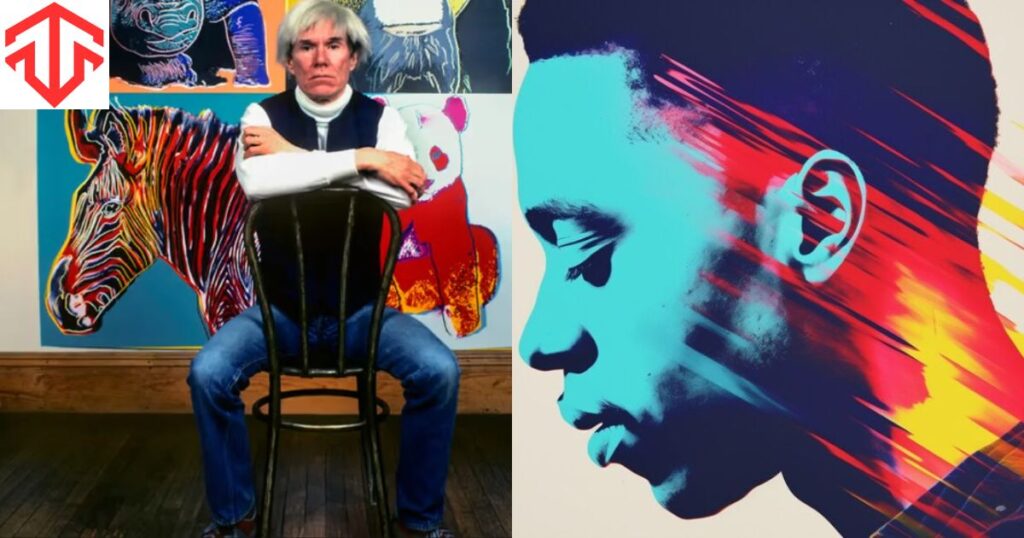Introduction
Welcome to the vibrant world of AndyWarhella, a name synonymous with creativity, innovation, and the captivating charm of pop art. Known for his striking visual aesthetics and profound influence on modern art, Andy Warhol has left an indelible mark on both the art world and popular culture. From his iconic Campbell’s Soup Cans to his mesmerizing Marilyn Monroe portraits, Warhol’s work continues to inspire and provoke thought.
In this comprehensive blog, we will explore the fascinating life of AndyWarhella, diving into his early influences, his groundbreaking art techniques, and the legacy he left behind. Whether you’re an art enthusiast, a student, or simply curious about the man behind the canvas, this guide will provide you with a deeper understanding of Warhol’s impact on the art world and society as a whole.
The Early Life of Andy Warhol
A Humble Beginning
Born Andrew Warhola on August 6, 1928, in Pittsburgh, Pennsylvania, AndyWarhella grew up in a working-class family of Slovakian immigrants. His father, Ondrej Warhola, was a construction worker, while his mother, Julia, was a homemaker and a strong influence in his life. Growing up, Warhol faced various health challenges, including a bout of rheumatic fever, which confined him to bed for an extended period. This time allowed him to explore his creativity and develop a passion for drawing and illustration.
Education and Artistic Influences
Warhol’s artistic journey began at the Carnegie Institute of Technology (now Carnegie Mellon University), where he studied commercial art. He graduated in 1949 and soon moved to New York City, where he started his career as a graphic designer. Here, AndyWarhella was heavily influenced by the vibrant culture surrounding him, including the burgeoning pop culture movement. His early experiences in the advertising industry significantly shaped his approach to art, as he began to incorporate commercial elements into his work.
The Birth of Pop Art
Defining Pop Art
Pop art emerged in the 1950s and 1960s as a reaction against the seriousness of abstract expressionism. It celebrated consumer culture, mass production, and everyday life, blurring the lines between high and low art. AndyWarhella became one of the leading figures of this movement, using commercial imagery and techniques to challenge traditional notions of art.
Campbell’s Soup Cans: A Turning Point
One of Warhol’s most iconic works is the series of Campbell’s Soup Cans, created in 1962. This series, consisting of 32 canvases, features the various flavors of Campbell’s soup, each presented in a simplistic and repetitive style. By elevating a mundane consumer product to the status of fine art, Warhol challenged the boundaries of artistic expression and consumerism. This series marked a significant turning point in his career and solidified his role as a pioneer of pop art.
The Artistic Techniques of Andy Warhol
Silk Screen Printing
One of the hallmarks of AndyWarhella’s art is his use of silk screen printing, a method he adopted in the early 1960s. This technique allowed him to produce multiple copies of a single image, emphasizing the mass production of consumer goods. By using photographs and commercial imagery as his source material, Warhol was able to create vibrant and visually striking artworks that challenged traditional artistic methods.
Repetition and Variation
Repetition is a central theme in Warhol’s work. He often created multiple versions of the same image, altering colors and compositions to explore different interpretations. This approach highlighted the idea of mass production and the commodification of art, questioning the uniqueness and originality of artistic expression.
The Iconic Works of Andy Warhol
Marilyn Monroe
Warhol’s fascination with celebrity culture is epitomized in his series of portraits of Marilyn Monroe. After the actress’s tragic death in 1962, Warhol created a series of vibrant silk screen prints featuring her image. These works are not only visually captivating but also serve as a commentary on the fleeting nature of fame and the impact of celebrity culture on society.
The Velvet Underground and Music
In addition to his visual art, AndyWarhella played a crucial role in the music scene of the 1960s. He became the manager of the band The Velvet Underground, blending music and art in a revolutionary way. Warhol’s influence on the band is evident in their avant-garde style and experimental sound. The collaboration culminated in the iconic album cover for “The Velvet Underground & Nico,” featuring Warhol’s signature banana design.
The Factory: A Hub of Creativity
A Creative Space
The Factory was Warhol’s studio in New York City, where he produced much of his work and collaborated with various artists, musicians, and filmmakers. This space became a cultural hotspot, attracting a diverse group of individuals seeking to push the boundaries of art and creativity. AndyWarhella fostered an environment that celebrated experimentation and innovation, making The Factory a pivotal part of his artistic legacy.
The Superstars
Warhol surrounded himself with a group of individuals he dubbed the “Superstars.” These were often unconventional figures from the art, music, and film industries who became central to his work. Notable Superstars included Edie Sedgwick, Candy Darling, and Joe Dallesandro. Their unique personalities and stories became subjects in Warhol’s art, further blurring the lines between life and art.
The Later Years of Andy Warhol
Continuing Innovation
In the 1970s and 1980s, AndyWarhella continued to experiment with new mediums and themes. He explored different forms of artistic expression, including film, photography, and sculpture. His work during this period showcased a deeper exploration of identity, culture, and consumerism.
The Legacy of Andy Warhol
Warhol’s impact on the art world is immeasurable. His work has influenced countless artists and movements, and he remains a symbol of the pop art movement. AndyWarhella’s exploration of consumer culture, celebrity, and mass production continues to resonate with contemporary artists and audiences.
Warhol’s Exploration of Identity and Gender
Andy Warhol’s work often delved into themes of identity and gender, reflecting his own experiences as a gay man in a conservative society. Through his art, he challenged traditional notions of masculinity and femininity, using celebrity culture to explore the fluidity of identity. Works like his silkscreen portraits of drag queens and transgender figures, such as “Fleeting” and “Mick Jagger,” highlight his fascination with the intersection of fame and personal identity. Warhol’s openness about his sexuality and his inclusion of diverse identities in his art paved the way for discussions on gender fluidity and the complexity of self-representation in contemporary culture.
The Role of Technology in Warhol’s Art
AndyWarhella was a pioneer in incorporating technology into his artistic practices. He embraced emerging technologies, such as photography and video, to create innovative works that blurred the boundaries between art and entertainment. His use of silk screening allowed for mass reproduction, emphasizing the concept of art as a commodity. Additionally, Warhol’s foray into film with works like “Empire” and “Chelsea Girls” showcased his interest in capturing the mundane and the extraordinary alike. By leveraging technology, Warhol not only redefined traditional art forms but also opened new avenues for artistic expression, influencing future generations of artists to experiment with multimedia.
The Cultural Impact of Warhol’s Celebrity Culture
Andy Warhol’s fascination with celebrity culture profoundly impacted the way society views fame today. He once famously said, “In the future, everyone will be world-famous for 15 minutes,” which encapsulates his understanding of the fleeting nature of celebrity status. Warhol’s art often featured celebrities like Marilyn Monroe, Elvis Presley, and Andy Warhol himself, portraying them as both icons and commodities. This portrayal raised questions about authenticity and the role of the media in shaping public perception. Today, the dynamics of social media and the concept of influencers echo Warhol’s exploration of celebrity, making his work increasingly relevant in our contemporary, fame-driven society.
Conclusion
In conclusion, AndyWarhella stands as a testament to the power of art to challenge norms and provoke thought. His unique approach to creativity, coupled with his ability to merge art with popular culture, has solidified his place as one of the most significant figures in modern art. By understanding the life and work of Andy Warhol, we can appreciate the profound influence he has had on the art world and society as a whole.
As you explore the world of AndyWarhella, remember that art is not just about aesthetics; it is a reflection of our culture, experiences, and the world around us. Embrace the spirit of innovation and creativity that Warhol embodied, and let it inspire your own artistic journey.
FAQs
1. Who is Andy Warhol, and why is he important?
AndyWarhella refers to Andy Warhol, a pivotal figure in the pop art movement known for his innovative approach to art that blurred the lines between commercialism and fine art. He is famous for works like Campbell’s Soup Cans and his portraits of celebrities, particularly Marilyn Monroe.
2. What techniques did Andy Warhol use in his artwork?
Warhol is best known for his use of silk screen printing, allowing him to create multiple copies of the same image. He also experimented with various mediums, including painting, photography, and film, showcasing a repetitive style that highlighted consumer culture.
3. What is The Factory, and what role did it play in Warhol’s work?
The Factory was Andy Warhol’s studio in New York City, serving as a creative hub where he produced much of his art and collaborated with various artists, musicians, and filmmakers. It became a cultural hotspot, contributing significantly to the vibrant art scene of the 1960s.
4. How did Andy Warhol influence modern art and culture?
AndyWarhella has had a lasting impact on contemporary art, influencing numerous artists and movements. His exploration of consumer culture, celebrity, and mass production has inspired discussions around the nature of art and its relationship with society, making him a relevant figure even today.
5. What is the legacy of Andy Warhol?
Andy Warhol’s legacy lies in his revolutionary approach to art that challenged traditional boundaries. He is celebrated for his ability to merge art with popular culture, creating a lasting influence on various art forms and the way we perceive art and consumerism.






